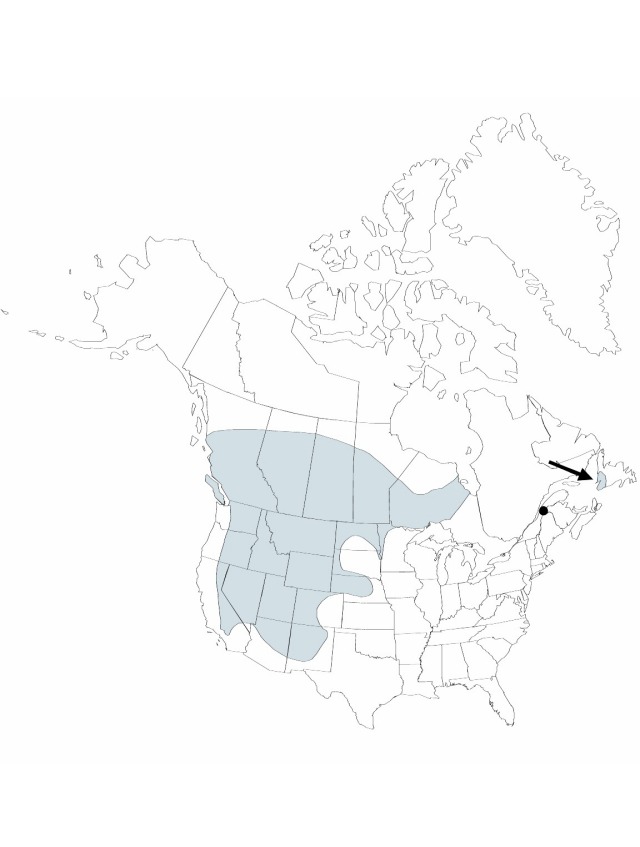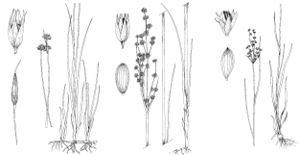Juncus longistylis
in W. H. Emory,Report on the United States and Mexican Boundary Survey, ... 2(1): 223. 1859.
Herbs, perennial, 2–6 dm. Rhizomes long creeping. Culms slightly compressed. Leaves: basal 2–5, cauline 1–3; auricles 1–2.5 mm, apex truncate to obtuse; blade flat, 1–3 dm × 1.5–3 mm, the cauline shorter. Inflorescences glomerules 1–4 (–8), each with 3–12 flowers, open or aggregate, 2–6 (–10) cm; primary bract shorter than inflorescence. Flowers: tepals brown with green midstripe, lanceolate, 5–6 mm, margins scarious, sometimes papillose; outer series slightly shorter; stamens 6, filaments 0.5–1 mm, anthers 1.2–2 mm; style 0.6 mm. Capsules tan, 3-locular, obovoid, 3–5 mm, shorter than perianth. Seeds ovoid, 0.4–0.6 mm, not tailed. 2n = 40.
Phenology: Flowering and fruiting summer.
Habitat: Moist ground in mountain meadows
Elevation: 1000–3300 m
Distribution

Alta., B.C., Man., Nfld. and Labr. (Nfld.), Ont., Que., Sask., Ariz., Calif., Colo., Idaho, Mich., Minn., Mont., Nebr., Nev., N.Dak., N.Mex., S.Dak., Oreg., Utah, Wash., Wyo.
Discussion
Selected References
None.
Lower Taxa
"dm" is not declared as a valid unit of measurement for this property.
